"I was so poor and I had no studio" says Christo. "I started working with little tin cans of paint"
In the first of two exclusive video interviews with Christo, the artist explains how the giant London Mastaba installation on the Serpentine lake is the culmination of over 60 years of working with stacked barrels.
The temporary London project, which is 20 metres high and consists of 7,506 barrels, was unveiled last month. But the artwork has its genesis in experiments made by Christo, 83, and his late partner Jeanne-Claude in the fifties and sixties.
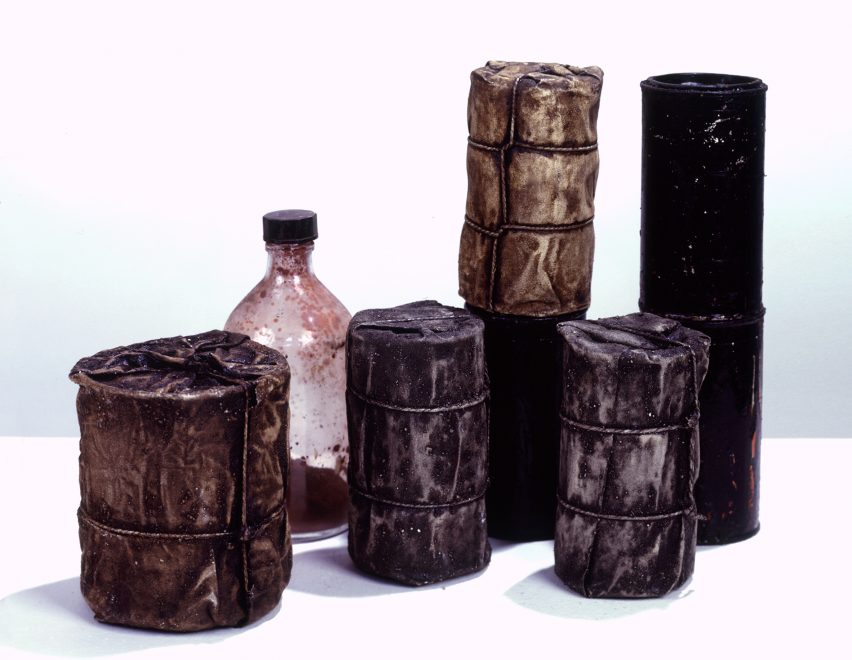
"I was born in Bulgaria and I escaped from the communist country to the west on 10 January 1957," Christo explains in the movie, which Dezeen filmed in London. "I met Jeanne-Claude in November 1958 and we together fell in love."
"We lived in Paris in between 58 and 64," he continues. "I was so poor, I had no studio and I was living in one room. I started working with little cans, tin cans of industrial paint. From the cans of the smaller size, I moved to the smaller sized barrels. I rented a garage outside of Paris when I started working with real barrels."
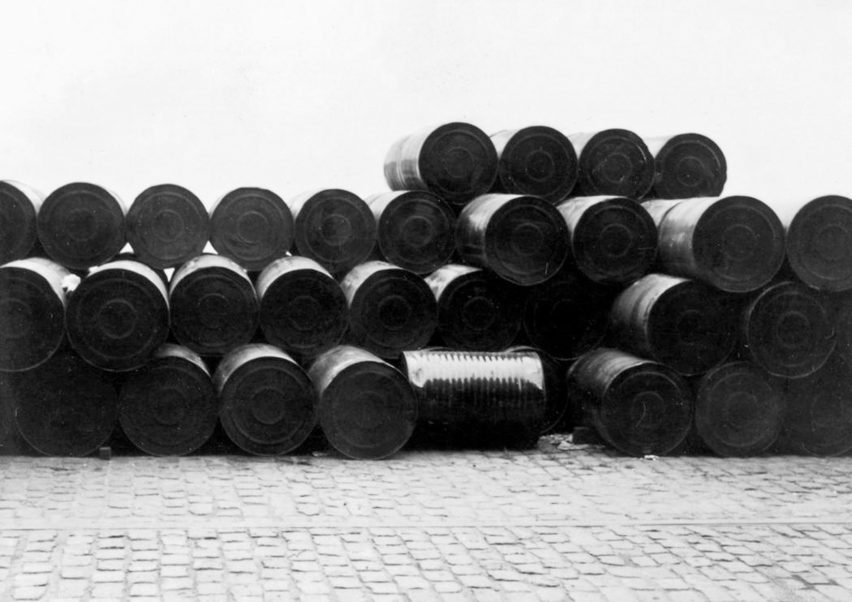
In 1962 he blocked a Paris street with stacked barrels in a reference to the Berlin Wall that was erected the previous year.
"I was worried the third world war would start," Christo says. "The Soviets took over Budapest during the revolution [in 1956] but I escaped and there was a big turmoil. I remember I was very scared that they would run over West Germany and come back to Paris and I proposed to do my artistic Iron Curtain in the smallest street, in the Rue Visconti, of the left bank of Paris."
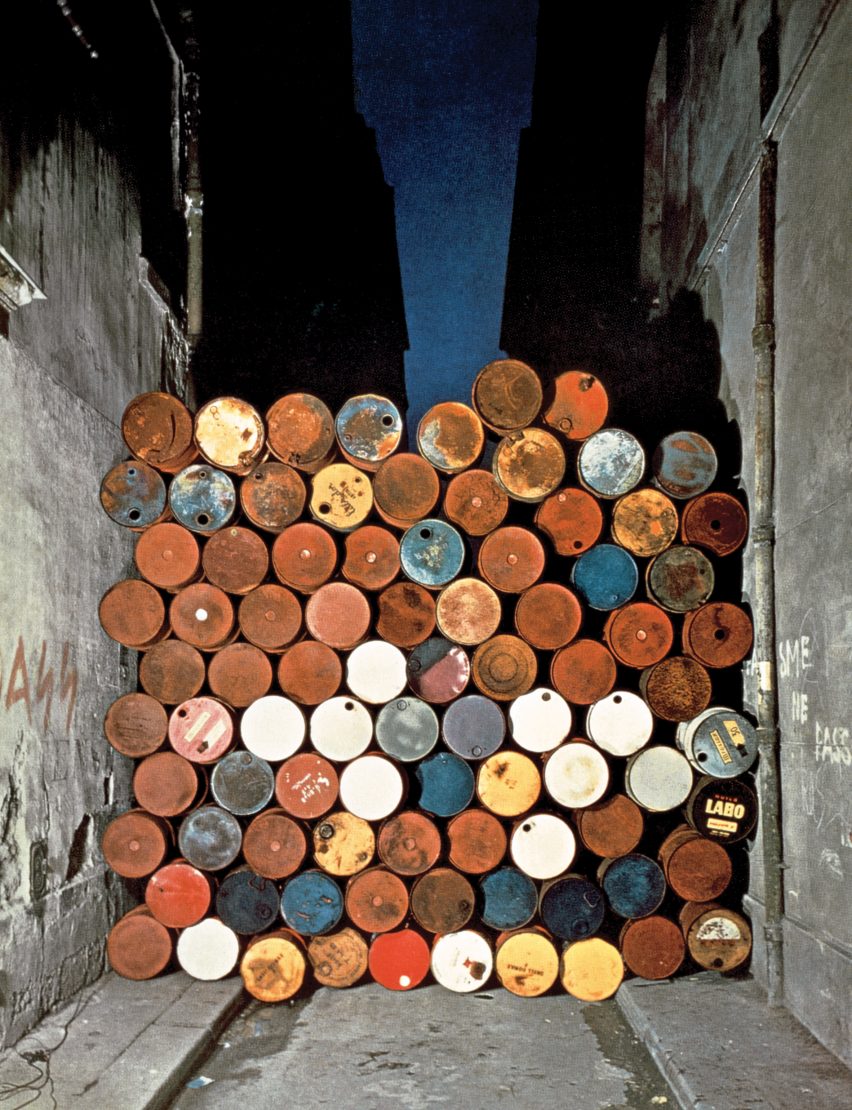
Christo and Jeanne-Claude are perhaps best known for their giant fabric artworks including Surrounded Islands, which involved floating pink fabric around two islands in Miami's Biscayne Bay, and Wrapped Reichstag, which saw the controversial German parliament building in Berlin wrapped in fabric in 1995, prior to its refurbishment by architects Foster + Partners.
But stacked barrels, and the mastaba form, have been a constant theme in the duo's work.
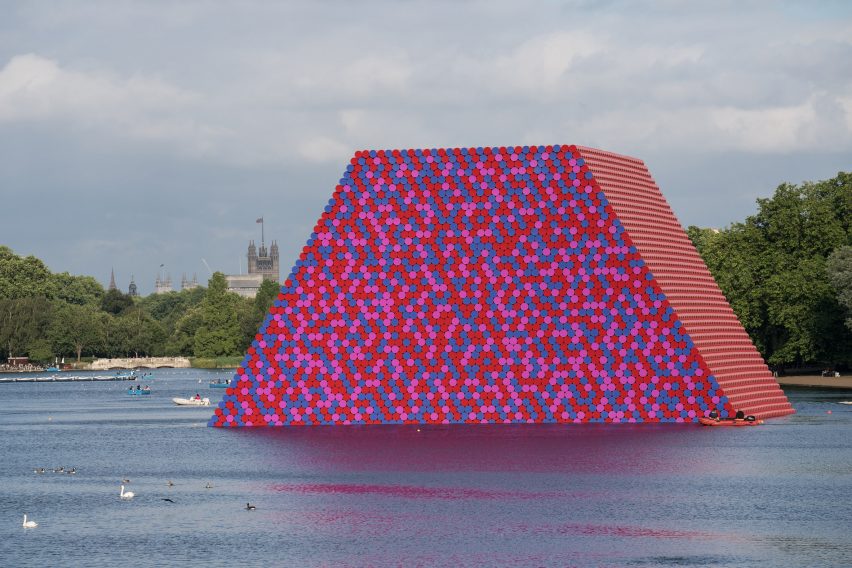
"The mastaba is a very old geometric form," Christo explains. "The first urban civilisation that we know of, when people left the countryside and built houses, towns and villages, was found in the area called Mesopotamia, which is today's Iraq."
"Archeologists discovered streets and houses made of mud and in front of these houses there was a bench to sit," he continues. "The benches had the form of a flat surface to sit, with of course two vertical sides for your legs and two slanted sides so that the mud bench didn’t fall down. People in the middle east, they're telling the name mastaba."
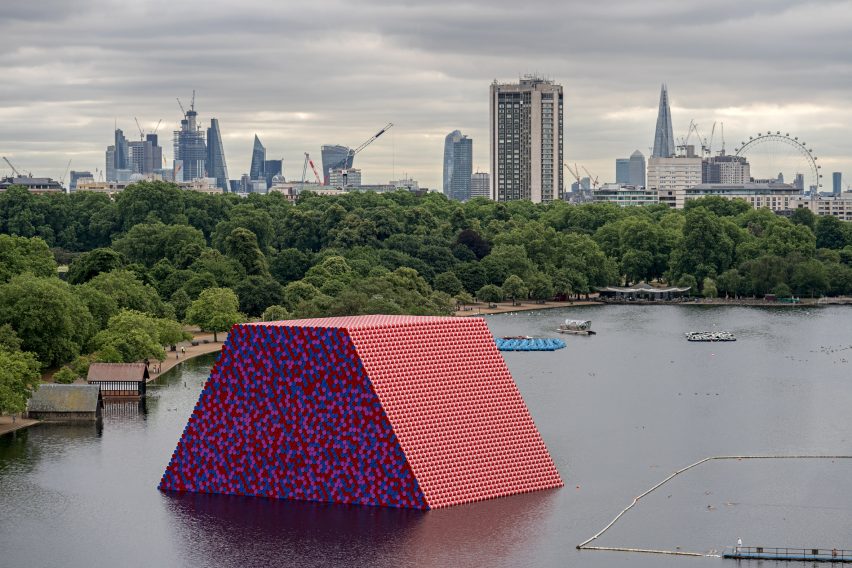
In the mid sixties, Christo and Jeanne-Claude had the idea to float a giant mastaba of barrels on Lake Michigan in the USA, but the idea was never realised. When Serpentine Galleries artistic director Hans Ulrich Obrist approached Christo about bringing an exhibition about the barrel projects to London, the artist saw the chance to revisit the idea in London.
"I saw the opening of the lake from the bridge and thought: 'let’s do the mastaba here'," he says, referring to the view of the Serpentine lake from a bridge close to the Serpentine Gallery.
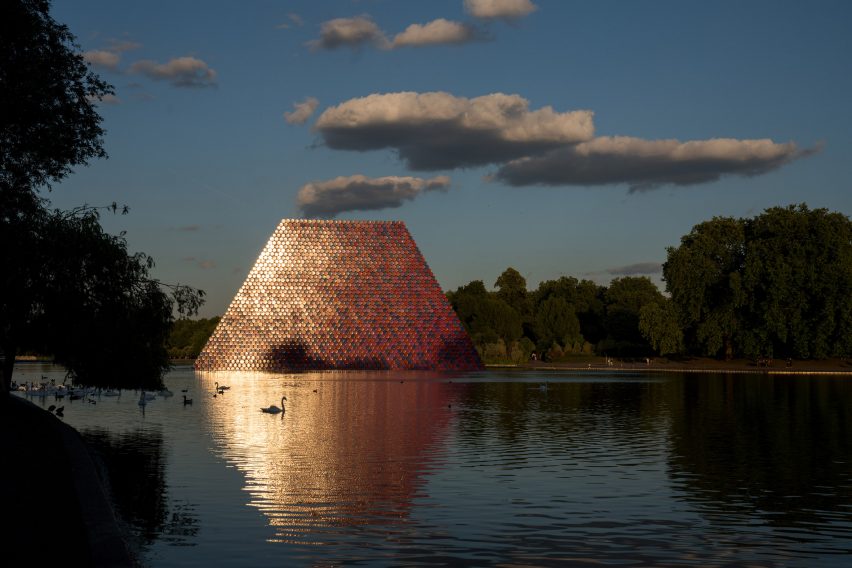
"The mastaba on the Serpentine lake is built [from] 7,506 barrels," Christo explains. "It's 20 metres high, the slanted wall in the water level is 30 metres and the vertical wall is 40 metres and that is the most magical proportion of that structure."
"All of the colours are chosen exactly with how the lake is situated and the greenery of the gorgeous park," he says. "You can see on the vertical wall, we have a deep red, almost bordeaux, deep blue and mauve. The slanted wall has red and the between the ribs are white."
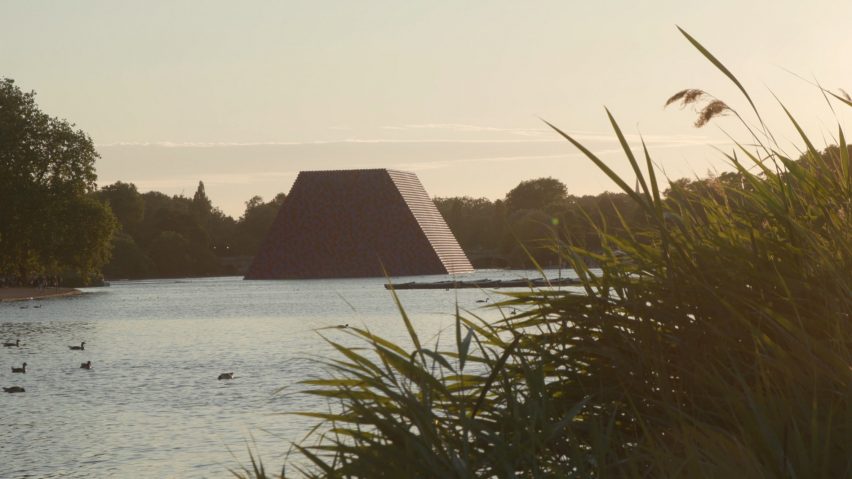
"This magic force of how the mastaba reacts to the sun and the light is always in some ways strange to the landscape and in some ways extremely attractive to the landscape."
Christo is working on an even larger mastaba for Abu Dhabi, which will be 150 metres high and consist of 410,00o barrels if realised, making it the largest artwork in the world.
Like all Christo's projects, the £3 million cost of the London project was raised by the artist himself by selling drawings and related artworks.
"We never do commissions. This is why in all these years we realised very few projects. This project was three million pounds. From the engineering, to the workers, to the materials" he explains.
"The barrels were fabricated in Holland, we needed to pay the trucks, we need a factory, we need to hire workers and we pay for that. All of these things, all the quality, all the decision is done because it's our money."
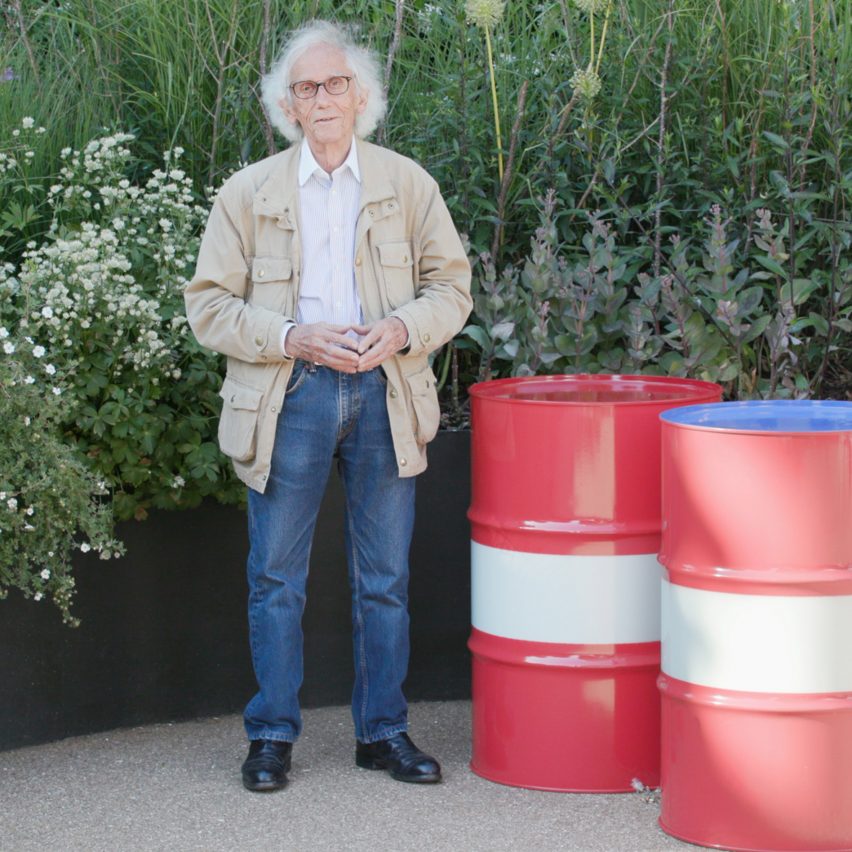
"There's no money back," he concludes. "We have something back, Jeanne-Claude was saying, it's better than any money: we have the Mastaba."
Christo's London Mastaba is at the Serpentine in Hyde Park, London until 23 September 2018. The exhibition Christo and Jeanne-Claude: Barrels and The Mastaba 1958-2018 is at the Serpentine Galleries until 9 September 2018 and is free to visit.
This movie was filmed by Dezeen in London. All artworks featured in the film are copyrighted by Christo. Archive images are courtesy of Christo and Jeanne-Claude, Serpentine Galleries and National Gallery of Art, Washington DC. A full list of photography credits is included at the end of the film.